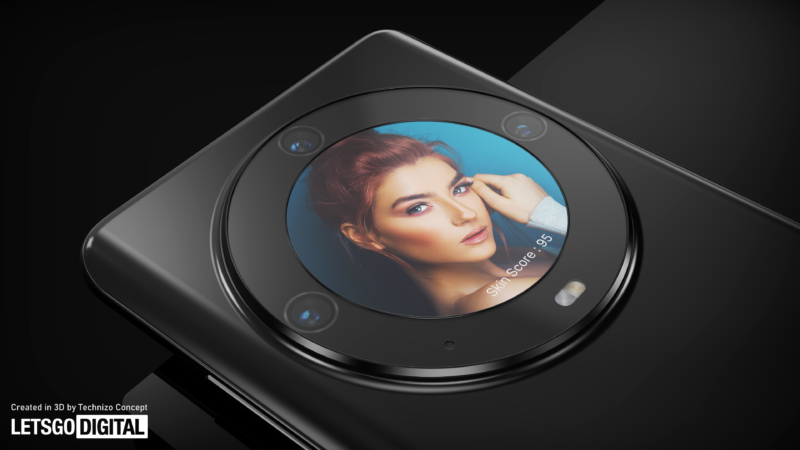Huawei Designs Face Scanning Camera That Generates a ‘Skin Score’
![]()
Huawei has patented a triple-camera 3D smartphone system that can scan and analyze a user’s face and skin. It can determine if enough sunscreen has been applied, if makeup has been properly removed, and provides advice on care with a “skin score.”
A Camera That Acts Like an ‘Intelligent Mirror’
In a utility patent discovered by Lets Go Digital, Huawei describes a triple-camera system that can exist on the rear of a smartphone or even act as a standalone smart mirror of sorts. The system captures 3D facial images to perform what it promises is an accurate facial analysis that can provide information about pores, wrinkles, acne, blackheads, color spots, red regions, dark eyes, or any combination of these.
The documentation shows a triple camera system around a large circular display. It is on this display that the photos captured with the analyzer are displayed as well as a “skin score” or “pore score” along with tips and recommendations that are designed to help users improve their skin structure.

Once a face is scanned, the documentation describes a way for the user to pan and rotate the scan to explicitly analyze specific areas of the face. Lets Go Digital notes that the calculations it promises to perform look quite advanced, as the depth and size of pores are also measured as well as “nasal fold” and crow’s feet.
Scanning Skin with Smartphones
While its implementation seems mainly cosmetic in its description, Huawei’s design that gives smartphones the ability to measure pore size and sense acne isn’t the first example of a smartphone converted into a skin scanning device.
In June of 2021, researchers from the University of Washington developed a way to use a modified iPhone camera to identify potentially harmful bacterial on the skin and in mouths. The team augmented the phone’s camera with a 3D printed blacklight-equipped ring light and combined it with custom software. This team’s approach is different from Huawei’s, however, in that it only uses a single camera instead of a set of three for the purposes of 3D mapping.
It’s not clear how accurate Huawei’s system would be from a medical standpoint, but the company might be more concerned with marketing the system towards those who want beauty recommendations rather than aiming to provide actual medicinal benefits. The full patent documentation can be read on Lets Go Digital’s website.
Image Credits: Header image render via Technizo Concept and Lets Go Digital.